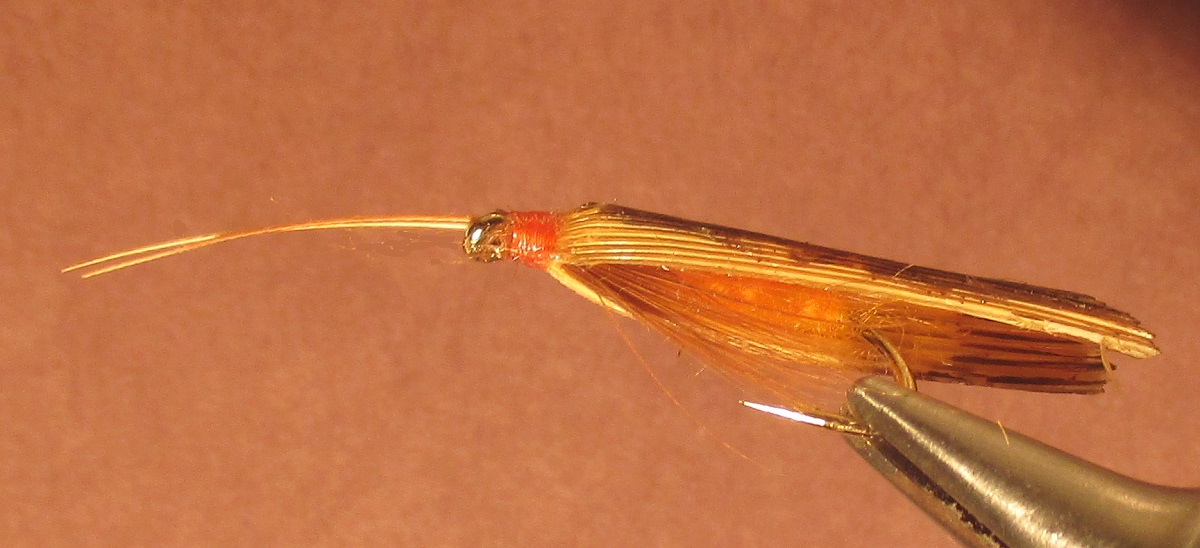Hook Size: 6
The Perfect Fly October Caddis Caddis Adult is a trout fly that imitates the adult or fully grown stage of life of the October Caddis caddisfly. They stay on the surface of the water for a short time before departing the water. They should be fished on the surface during the hatch as well as later on when the female adults return to the water to deposit their eggs. It is a dry fly that should be treated with floatant.
The October Caddis is a beautiful, large, orange caddisfly. It is most important for anglers
in the Pacific North and Rocky Mountains. The adults emerge from the pupae in shallow
water closely adjoining their normal fast water habitat. They usually hatch in the late
afternoons and early evenings. Ovipositing takes place near dark. These caddisflies can
create quite a disturbance on the surface of the water as well as when the are fluttering
over the water in the process of depositing their eggs. The “Perfect Fly” Adult imitation of
the October Caddis is a very realistic imitation that has proven over and over to catch
large trout during the egg laying event.
Presentation:
As soon as you observe or hear trout eating the egg laying caddis, change from the
“Perfect Fly” Pupa to the adult imitation. I would continue to fish the pupa imitation until I
knew the trout were eating the egg layers.
These large caddisflies are fairly easy to see even under low light conditions. Wherever
you see them depositing their eggs is exactly where you want to place your fly. Even
thought the real caddis make a big disturbance on the water, we still suggest you fish the
adult fly in a dead drift. You may twitch the rod tip some, but it is easy to overdo it and
scare the trout more than attract them. It usually works just great as soon as the trout
spot it without any action.
You also may want to try to fish the adult early in the mornings before the sun comes on
the water. Also, don’t forget about rainy, overcast or even days it is snowing lightly. The
egg layers have been spotted depositing their eggs under low light conditions earlier in
the day.

